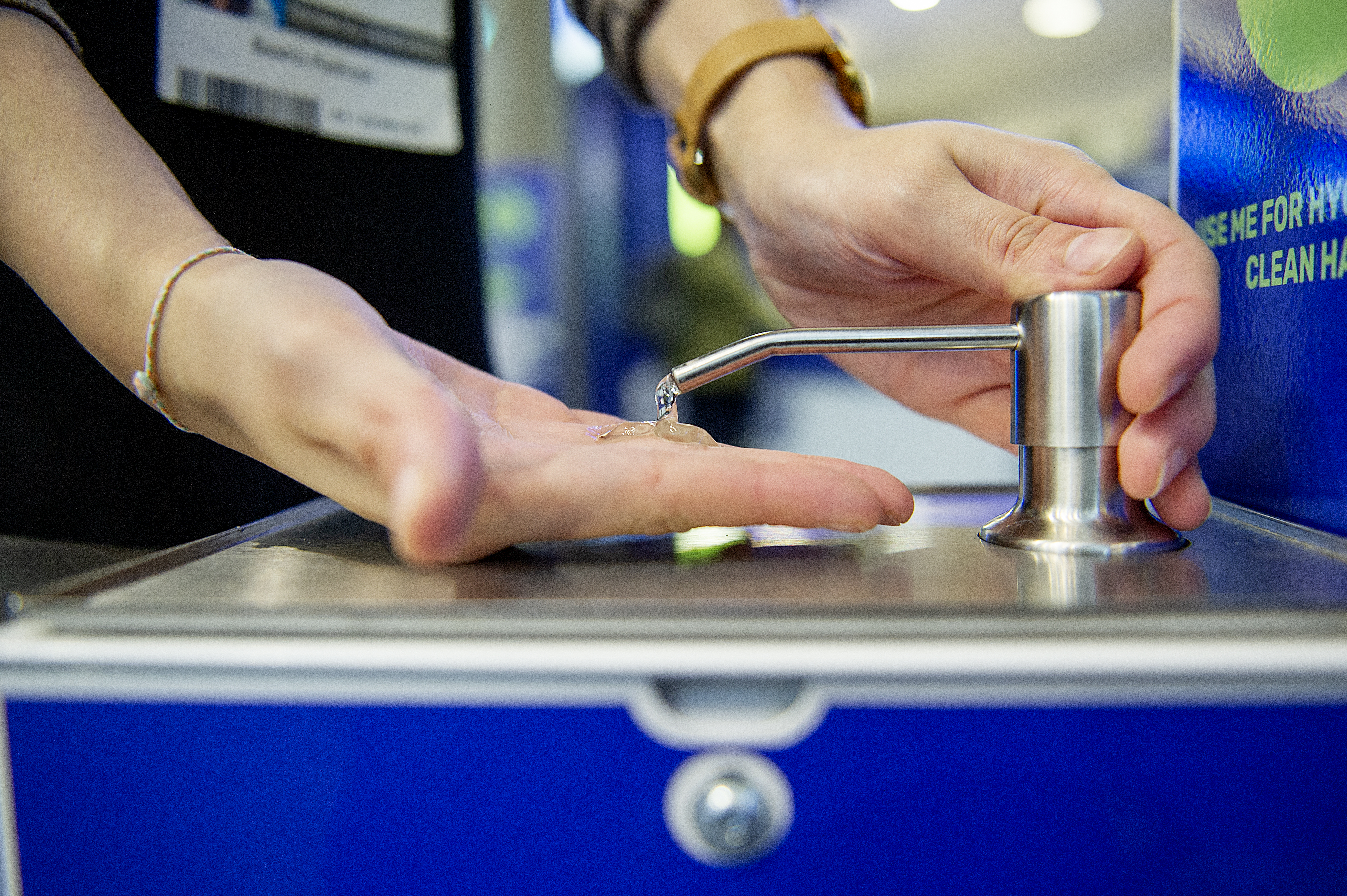
 Now that the second term is upon us — how can schools ensure they meet the hygiene standards expected in today’s new normal?
Now that the second term is upon us — how can schools ensure they meet the hygiene standards expected in today’s new normal?
As we’ve seen, schools can be the perfect place for germs where they can spread quickly between students and staff via direct and indirect contact, with building ventilation an increasingly important discussion topic. Independent expert group OzSage has issued a number of recommendations of which protecting children from aerosol transmission of SARS-CoV-2 with adequate indoor air ventilation as one.
In January, Australia experienced record high cases of SARS-CoV-2 amidst the Omicron wave. While there are certainly some variables beyond the control of education facilitators such as what happens when students and staff are off campus, when they are at school, education institutions have a responsibility to protect students and staff.
Although respiratory viruses such as SARS-CoV-2 and influenza viruses are airborne and spread via droplets and aerosols, they can also be passed along by touching contaminated surfaces with the virus then transferred via hands to one’s eyes, nose and mouth. A study by CSIRO looked at how long SARS-CoV-2 can survive on a variety of surfaces including stainless steel (which is often used for doorknobs), and glass at three different temperatures (20, 30 and 40 degrees Celsius). The results showed that it has the capability to remain infectious on these surfaces for up to 28 days. However, it's important to point out that this lab study didn’t disturb surfaces so it’s not a real-world example.
I don’t say this to scaremonger, rather to demonstrate why a science-led and targeted approach to cleaning and disinfection of frequently touched surfaces in community spaces such as schools is needed to supplement other control measures.
With appropriate protocols in place, adequate training, good ventilation, good hand hygiene, wearing of masks, and timely cleaning and disinfection of surfaces with products that kill germs, schools can minimise the spread of germs on site so parents, staff and students can feel confident about returning to school.
Preparing for the 2022 flu season
The silver-lining of Australia’s international border policy and lockdowns throughout the last two years is that cases of flu in Australia in both 2020 and 2021 have been very low. However, there is concern among some experts that 2022 may be the year that changes.
Children are vulnerable and interact with a lot of different people both in and outside the classroom which means viruses can be easily spread. As schools return to face-to-face learning, schools should be a primary place to focus on helping to stop the spread of viruses like flu.
Science-based protocols
Schools may be wondering what measures they can take to mitigate the contamination of frequently touched surfaces effectively and efficiently. The answer is: targeted hygiene.
Targeted hygiene refers to the practice of focusing cleaning and disinfection at key moments where it’s most needed. This is all about understanding that surfaces can become contaminated throughout the day, so protocols need to be developed for cleaning and disinfecting high-touch, high-traffic areas and surfaces such as check-ins, classroom learning equipment, door handles, desks, stair rails, and lift buttons at intervals according to use and risk.
Once thorough cleaning disinfection protocols have been established and implemented for high contact touch points in a school, the frequency when protocols are carried out is an important factor in reducing the spread of germs and is the keystone of targeted hygiene.
Hygiene intervention also focuses on good hand hygiene —washing or sanitising one's hands at key times, such as when arriving at school, before eating lunch, after playing outside and after using the bathroom. Hand sanitiser is a great option to be used in places where sinks are not available such as at school and classroom entry points but make sure it is easy to access and kept stocked up.
It’s imperative that schools follow science and risk-based protocols when it comes to cleaning and disinfection of their spaces. These protocols need to be assessed rigorously and designed with a school environment in mind, taking into account all the times and places that targeted hygiene needs to be applied. In Australia, the federal government’s Department of Health provides excellent and clear guidance on how to appropriately clean and disinfect shared spaces in the community.
In following this advice and implementing hand and surface hygiene at key moments, by cleaning and disinfecting frequently touched surfaces at the right times, in the right way, using the right products, schools can put their best foot forward in ensuring their spaces are hygienically clean so they can focus on what really matters — educating the next generation.
To recap
As students sit in classrooms across the country, it is crucial that schools do everything they can to protect students and staff while they are in their care. By focusing on protocols that are adapted to need, schools can clean smarter, not just harder.
In summary, schools can implement good hygiene practices by doing the following:
- Develop and implement cleaning and disinfecting protocols for frequently touched surfaces such as handrails, chairs, desks, door handles, classroom learning equipment, and computer accessories like mouses and keyboards.
- If surfaces or hands are visibly dirty, then they should be cleaned first and then surfaces should be disinfected as well.
- In places like gyms where body fluids such as sweat are more likely to appear on surfaces, ensure there are stringent guidelines and policies in place for cleaning up and disinfecting the area and equipment after use.
- When using cleaning products and disinfectants, use only as directed and store away from children.
- Ensure that all students and staff adopt good hygiene habits and wash or sanitise their hands when they arrive at school, before eating, using the bathroom and upon entering the classroom.
 Dr Lisa Ackerley is the Director of Medical and Scientific Engagement, Hygiene, at Dettol Pro Solutions.
Dr Lisa Ackerley is the Director of Medical and Scientific Engagement, Hygiene, at Dettol Pro Solutions.


